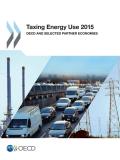
The Little Green Data Book provides key environmental data for over 200 economies, based on the World Development Indicators 2015 and its online database. Over 50 indicators are used, organized into categories on: agriculture; forests and biodiversity; oceans; energy and emissions; water and sanitation; environment and health; and national accounting aggregates. Data is presented for the regions of East Asia and Pacific, Europe and Central Asia, Latin America and the Caribbean, Middle East and North Africa, South Asia, and Sub-Saharan Africa.
The 2015 edition uses two new air pollution indicators: mean annual exposure to suspended particulate matter less than 2.5 microns in diameter (PM2.5); and percentage of total population exposed to PM2.5 pollution above the World Health Organization (WHO) Air Quality Guidelines (AQG) value of an annual average of 10 microns per cubic meter. Previous editions used indicators focused on the larger particulates (PM10) and only on urban centers with more 100,000 persons.
Also incorporated this year, are estimates of the economic costs of air pollution, including household air pollution from cooking with solid fuels.
This report produced in co-operation between the Organisation for Economic Co-operation and Development (OECD), the International Energy Agency (IEA), the International Transport Forum (ITF) and the Nuclear Energy Agency (NEA) identifies the misalignments between climate change objectives and policy and regulatory frameworks across a range of policy domains (investment, taxation, innovation and skills, trade, and adaptation) and activities at the heart of climate policy (electricity, urban mobility and rural land use).
Outside of countries’ core climate policies, many of the regulatory features of today’s economies have been built around the availability of fossil fuels and without any regard for the greenhouse gas emissions stemming from human activities. This report makes a diagnosis of these contradictions and points to means of solving them to support a more effective transition of all countries to a low-carbon economy.
This book explores the environmental competitiveness of 133 countries around the world, presenting an index evaluation system to facilitate a comparative analysis of environmental competitiveness on a global scale. This is a new way to measure competitiveness in the light of the contradiction between world economic development and environmental protection. Global environmental competitiveness covers five aspects: the ecological environment, resources environment, environmental management, environmental impacts and environmental coordination. The authors use longitudinal study and horizontal analysis, combining qualitative and quantitative analysis methods so as to conduct an in-depth study of theoretical, empirical and methodological issues of global environmental competitiveness.This book will appeal to scholars and professionals with an interest in environmental issues and environmental competitiveness at a global level, as well as those with an interest in each of the 133 countries analyzed in this text, including environmental policy makers in those countries.

Energy is a critical input into the production and consumption patterns that support economic and social wellbeing. However, many forms of energy use contribute to the environmental and climate challenges societies face today. Taxation is a key tool by which governments can influence energy use to contain its environmental impacts. This report provides a systematic analysis of the structure and level of energy taxes in OECD and selected other countries; together, they cover 80% of global energy use.
This report builds on the 2013 edition of Taxing Energy Use, expanding the geographic coverage of the 2013 data set to include Argentina, Brazil, China, India, Indonesia, Russia and South Africa. The report describes energy use, taxation and pricing in these countries and presents detailed graphical profiles of the structure of energy use and taxation for each.
Shifting public and private investment from "brown" to "green" is an essential part of climate change. The post-2020 climate agreement to be agreed at COP 21 in December 2015 has the potential to play a significant role in signalling the importance of such a shift. This paper explores how the 2015 agreement could spur further mobilisation of climate finance by examining the current state of play regarding existing financing environments and mechanisms. These include examining the existing international institutional arrangements under the UNFCCC to see how balanced financing, co-ordination, streamlining and complementarity between institutions could be achieved. The paper also highlights the key role that in-country enabling environments can play in further mobilising public and private climate finance, and discusses how the 2015 agreement could enhance both "pull" and "push" factors for mobilisation. In addition, the paper also discusses how the agreement could facilitate the broad use of a spectrum of financial instruments and the further development of an enhanced system for measurement, reporting and verification of climate finance.

Produced by the United Nations Environment Programme (UNEP), in collaboration with Tongji University, this Chinese-language textbook aims to inform China’s economic structural transformation and its move towards ecological civilization. It involved 21 authors from 10 national and international institutions, covering the theoretical, sectoral and policy dimensions of green economy with a specific focus on key issues of relevance to China. This book is supported by illustrative examples tailored to a Chinese audience and provides a systematic understanding of the inclusive green economy concept and its linkage to the Chinese concept of Ecological Civilization.
Placing Indonesia’s economy onto a green and sustainable development pathway, as envisaged in the National Long Term Development Plan, will require a large mobilization of investment. Estimates of the annual investment needed are in the order of US$300‐530 billion, with a large portion of this investment needed in critical infrastructure, as well as environmentally sensitive areas such as agriculture, forestry, energy, mining and waste. In addition, financing for SMEs and industry is critical for creating jobs and boosting productivity.
To date, there is still limited understanding of the broad landscape of private green finance in Indonesia. While some research has been conducted on sustainable financing in the banking sector, there has been relatively little systematic research into the specific features and flows of green finance from private capital markets, even though Indonesia has reasonably sophisticated financial institutions and markets. This study is therefore intended to contribute to the exploration of the state of green investment in Indonesia within the wider economic and financial sector context.
Adequate, appropriate finance is crucial for sustainable development in the Asia-Pacific region. The United Nations Economic and Social Commission for Asia and the Pacific UN (ESCAP) estimates that the region needs to invest around US$2.5 trillion a year between 2013 and 2030 to achieve key sustainable development goals:
- US$500-800 billion to close gaps in education, health, employment, social protection and basic access to energy services.
- US$800-$900 billion for developing infrastructure for energy, transport, telecommunications and water and sanitation.
- US$500-800 billion for climate change mitigation and renewable energy.
This briefing has been produced by the UNEP Inquiry as a contribution to discussions at the Regional Consultation on Financing for Development in Asia and the Pacific which took place in Jakarta, Indonesia in April 2015. It draws on the Inquiry’s ongoing research, and country engagement in particularly focusing on the sustainable development, financial systems and actions to be conducted for the Asia and the Pacific region.
The Black Carbon Finance Study Group (BCFSG), led by the World Bank Group and United Nations Environment Programme’s Finance Initiative with support from the CCAC, investigated ways to scale up financing and investments for black carbon mitigation. Its new report identifies existing funds and potential financial mechanisms that could attract more funding and outlines strategies for scaling up in future.
The BCFSG, comprised of 30-40 experts with backgrounds in operations, policy, science and finance, began its working sessions in June 2014. Their main mission was to identify priority sectors to focus on, key investment opportunities, and the potential financing mechanisms to lower black carbon emissions.
As a result, two black carbon intense sectors (domestic cooking and heavy diesel) were recognized as mature enough to attract public and private sector financing, and had sufficient performance standards to measure progress. While it was not in the working group’s mandate to identify performance metrics they determined that having clear ways of measuring black carbon abatement is crucial to attract funding.
